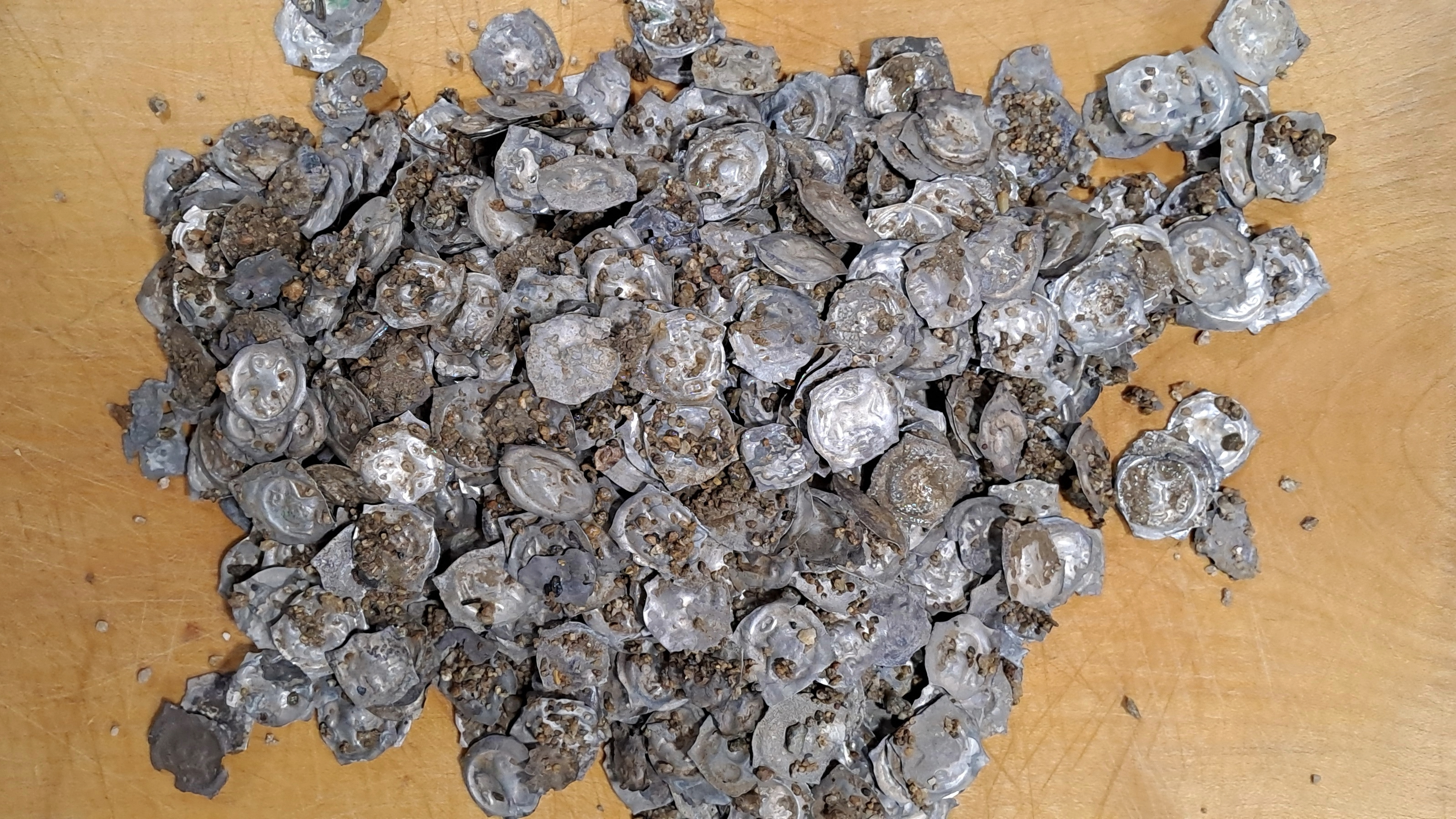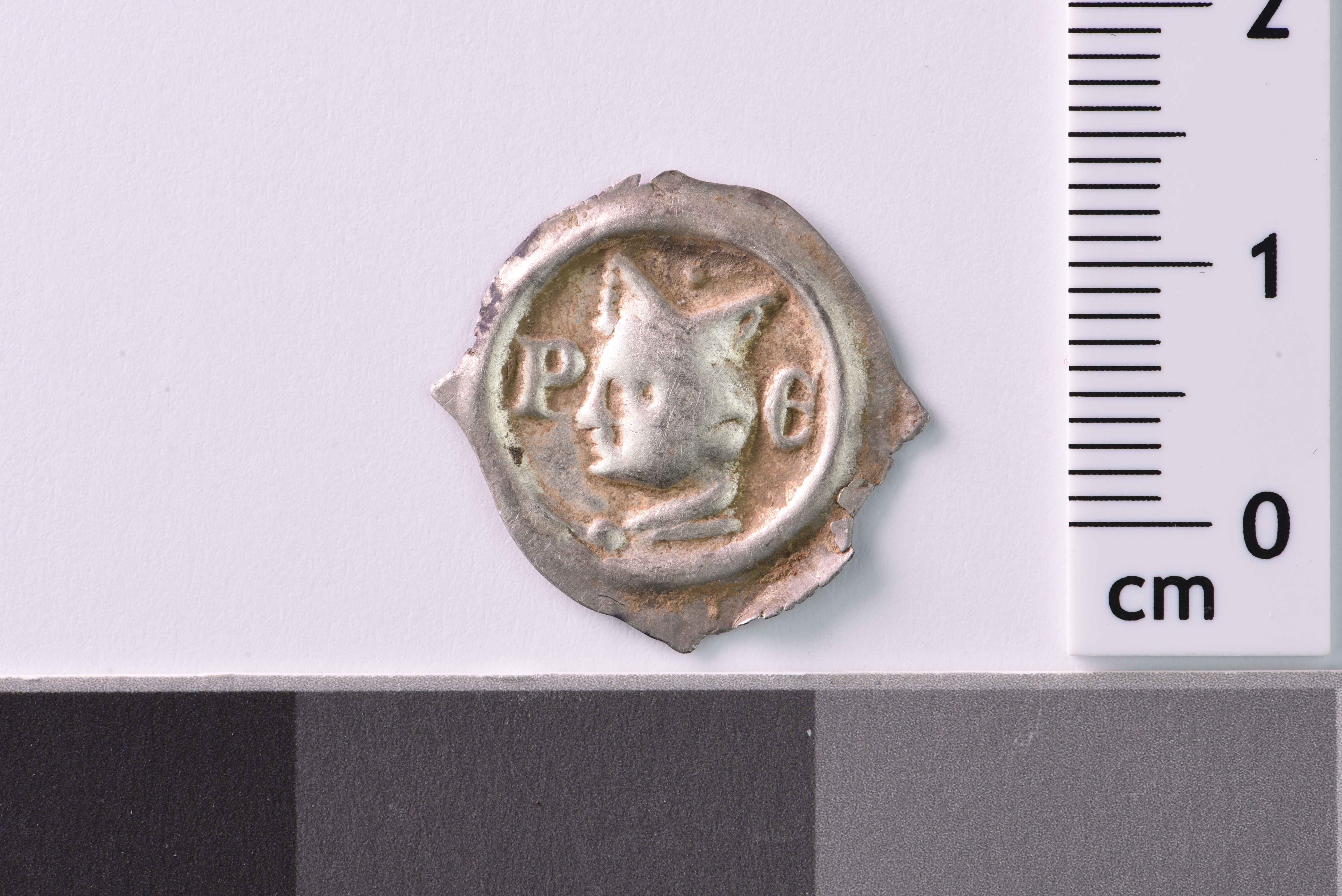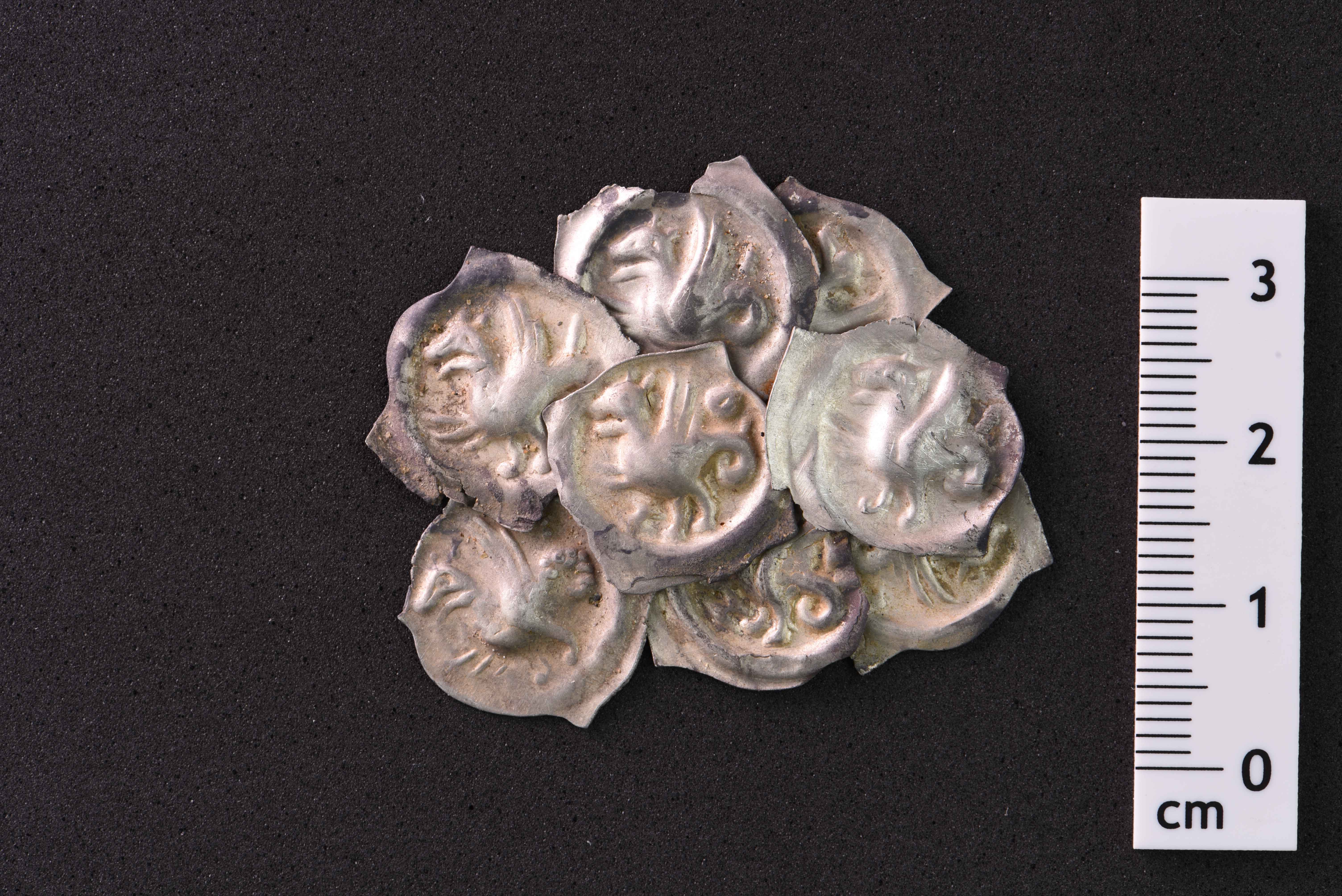
Archaeologists in Germany have unearthed more than 1,500 medieval silver coins after a citizen unexpectedly noticed what looked like "small metal plates" while digging during a construction project.
The discovery "is the biggest treasure since 1949 in the region of Freiburg," Andreas Haasis-Berner, an archaeologist at the State Office for Monument Preservation in Stuttgart, told Live Science in an email.
The finding, which was made in May while workers laid pipe near a swimming pool in the municipality of Glottertal, bears clues to what the mining and minting trades looked like in the area 650 years ago, according to a translated statement from the Stuttgart Regional Council.
Back in 1949, archaeologists in Freiburg (also known as Freiburg im Breisgau) found about 5,000 coins from around the 1280s, but no medieval coins had been found in Glottertal, which is about 6 miles (10 kilometers) northeast of Freiburg. Glottertal sits in the Black Forest mountains in an area known for its picturesque valleys and dark pine forests, which are dotted with orchards and vineyards. Freiburg was founded by the House of Zähringen, a dynasty ruled by dukes from around 1120 to 1218. When the Zähringer line ended, the city was taken over by the House of Urach.
"Glottertal has been one of the most important mining areas for the dukes of Freiburg," Haasis-Berner said. "The site where the coins were found was a main settlement area for miners," who unearthed metals such as silver.
Related: Hoard of 100,000 centuries-old coins discovered in Japan
During the pipeline installation, Haasis-Berner received a call from Claus Völker, a Glottertal citizen who said he had found some coins during the construction project.

"The next morning, he examined the place a second time, and now, his wife found a huge amount," Haasis-Berner said. "Some hours later, I went to the place and dug about 1,000 coins." In the days after the initial discovery, a few experts were brought to the site with metal detectors. Despite the adverse weather conditions with rain and knee-deep mud, the team managed to retrieve 500 to 600 more coins.
At the time the coins were minted in the 14th century, "you could have bought about 150 sheep with the coins," Haasis-Berner said in the statement.
After a rough cleaning of the coins, the experts determined that the coins were likely minted in the 1320s and were mainly from what is now Germany, Switzerland and France.

The new finding joins four similar coin hoards previously found in the greater region that date to the 1320s, Haasis-Berner said. "With these treasures, we can see which coins have been common," he said.
Importantly, the latest discovery sheds light on the Glottertal's medieval history and economy, he noted.
"The evaluation of this coin hoard will enable us to make statements about the circulation of coins in Breisgau, the minting activity in the mints, the silver trade, but also the mining in Glottertal," Haasis-Berner said.







